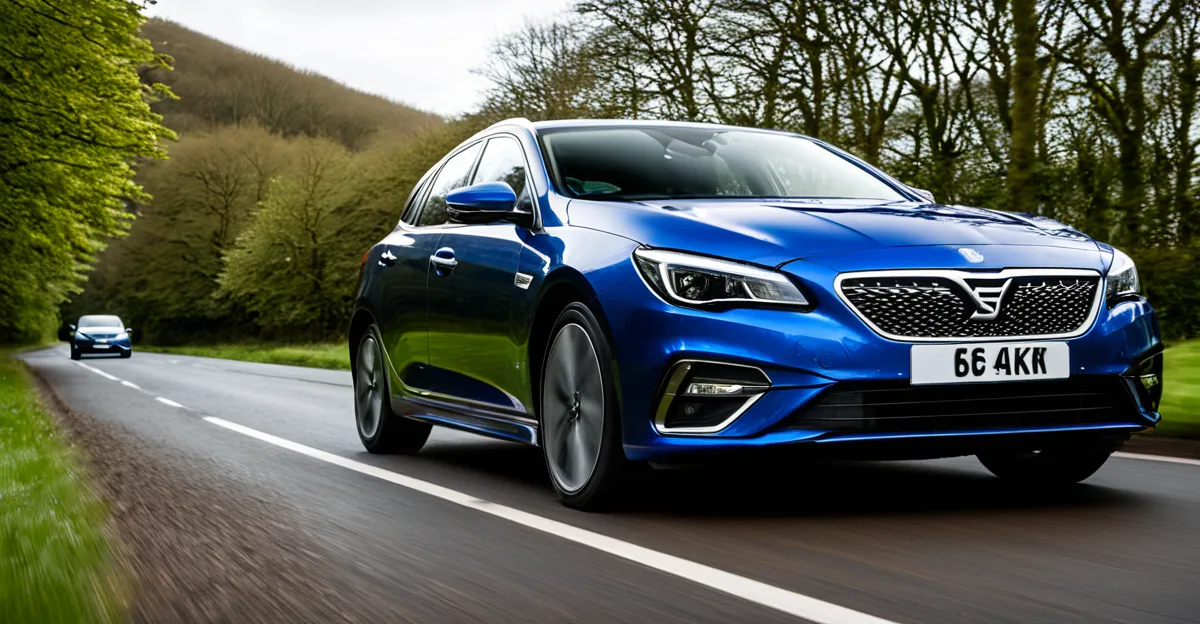Overview of Emissions Challenges in the UK Automotive Sector
Understanding the UK automotive emissions landscape requires focusing on the primary sources contributing to pollution. The automotive sector’s main emission sources include traditional petrol and diesel engines, which dominate the UK car industry trends. These engines emit significant levels of carbon dioxide (CO2), nitrogen oxides (NOx), and particulate matter, all of which impact air quality and contribute to climate change. Despite advances in cleaner vehicle technologies, internal combustion engines remain prevalent, posing substantial challenges in reducing overall emissions.
Recent emissions statistics paint a clear picture: while there has been a steady decline in emissions from passenger cars, the levels remain higher than targeted reductions, particularly in urban areas where traffic volume contributes heavily to pollution. The UK car industry trends reflect this difficulty, with a large portion of the vehicle fleet still based on fossil fuels, slowing progress toward the government’s ambitious targets.
Also to read : How Will the Rise of Electric Vehicles Influence the Future of Petrol Cars?
The hurdles to reducing emissions in the UK automotive sector are multifaceted. Key automotive challenges include the slow turnover rate of older, more polluting vehicles, limited infrastructure for electric and low-emission vehicles, and the market’s dependency on traditional fuels. Additionally, consumer adoption rates of newer technologies are influenced by vehicle costs, range anxiety, and charging availability. These factors collectively impede swift progress toward cleaner automotive emissions. Understanding these challenges is crucial to devising effective strategies and policies tailored to the UK context.
Current Solutions for Reducing Automotive Emissions in the UK
Addressing emissions reduction strategies involves a multifaceted approach focused on transforming the UK automotive landscape. One of the most significant developments is the accelerated UK electric vehicles (EVs) adoption. Increased availability and affordability of electric cars have boosted consumer interest considerably, helping to decrease reliance on petrol and diesel engines, the main sources of UK automotive emissions. Government incentives further support this shift by reducing upfront costs and expanding charging infrastructure.
Also read : How Will Autonomous Vehicles Revolutionize UK Public Transportation?
In parallel, hybrid vehicle adoption plays a crucial role. Hybrids serve as a transitional technology combining internal combustion engines with electric motors, effectively lowering emissions compared to traditional vehicles. This is particularly relevant given the existing challenges in fully replacing older, polluting vehicles within the UK fleet. Hybrid models reduce fuel consumption and emissions while alleviating some concerns over battery range and charging options.
The growth of low-emission vehicle infrastructure complements these advancements, addressing a core automotive challenge: charging accessibility. The continual expansion of rapid charging stations and improved grid integration lowers range anxiety and supports longer journeys in EVs. In essence, the synergy between advancing vehicle technologies and enabling infrastructure underpins the current emissions reduction strategies shaping the UK car industry trends.
Alternative Fuels and Innovative Technologies
Exploring alternative automotive fuels is vital for advancing emissions reduction in the UK automotive sector. Among these, hydrogen vehicles UK are gaining increasing attention due to hydrogen’s potential for zero tailpipe emissions. Hydrogen fuel cells generate electricity through a chemical reaction between hydrogen and oxygen, emitting only water vapor. This makes hydrogen a promising solution, especially for heavier vehicles and longer ranges, where battery-powered electric vehicles face limitations.
In addition to hydrogen, biofuels are emerging as a sustainable alternative. Biofuels, derived from organic materials such as plant oils and waste, can directly replace or blend with traditional petrol and diesel. Their use helps decrease net carbon emissions, as the carbon released upon combustion roughly equals the carbon absorbed during the fuel’s biological growth. However, the scalability and environmental impacts of large-scale biofuel production remain challenges requiring ongoing research.
Progress in sustainable automotive technologies also hinges on advancements in battery development. Battery innovations focus on increasing energy density, reducing costs, and shortening charging times. These improvements not only enhance the viability of electric vehicles but also decrease the environmental impact associated with battery production and disposal. Innovations such as solid-state batteries hold particular promise for boosting performance and safety.
Several UK-based pilot projects illustrate the implementation of these alternative automotive fuels. For example, trials of hydrogen buses and fleet vehicles in urban centers demonstrate practical applications of hydrogen technology reducing emissions substantially. Similarly, blending biofuels into public transport fleets has shown measurable emission reductions without requiring major changes to existing infrastructure.
Overall, the integration of hydrogen vehicles UK, biofuels, and cutting-edge battery technologies marks a critical frontier in sustainable automotive innovation, complementing the broader emissions reduction strategies needed to meet UK targets.
Manufacturing and Supply Chain Reforms
Reforming manufacturing and supply chains is essential for achieving comprehensive emissions reductions in the UK automotive sector. The shift toward sustainable manufacturing focuses on minimizing the carbon footprint throughout vehicle production. This includes optimizing energy efficiency in factories, adopting renewable energy sources, and implementing circular economy principles where waste is reduced or reused.
A key aspect involves integrating green automotive supply chain UK initiatives. Manufacturers increasingly prioritize sourcing raw materials responsibly, emphasizing recycled and low-impact inputs. For example, using lightweight materials such as aluminum and advanced composites helps lower vehicle weight, directly contributing to reduced fuel consumption and emissions during use.
Efforts to achieve low-carbon production also extend to transportation and logistics. Streamlining supply chain routes, utilizing electric or hybrid freight vehicles, and improving inventory management can significantly cut emissions linked to parts and materials movement. These reforms reflect a systemic approach, encompassing every stage from raw material extraction to final assembly.
The UK automotive industry trends indicate growing collaboration between manufacturers, suppliers, and policymakers to enforce sustainability standards across the entire supply chain. This collaboration aims to ensure transparency and accountability, thereby accelerating the decarbonisation of automotive production in line with national climate goals.
Government Policies and Industry Incentives
Government interventions are pivotal in shaping the UK automotive sector’s path toward lower emissions. The UK government incentives focus on accelerating the transition to cleaner vehicles through targeted policies and financial support, aimed at both consumers and manufacturers.
A core component of automotive policy UK is the establishment of stringent emissions regulations. These policies set progressive targets for reducing greenhouse gases and pollutants, driving manufacturers to innovate and produce low-emission vehicles. For instance, regulations mandating the phase-out of petrol and diesel cars by specific dates create a clear framework, encouraging investment in electric and hybrid technologies. These rules also foster improvements in UK electric vehicles standards and charging infrastructure, thus easing adoption.
To complement regulatory demands, numerous grants for low-emission vehicles directly incentivize consumers. These grants for low-emission vehicles reduce the upfront expense of electric and hybrid cars, addressing a major barrier to widespread uptake. Additionally, incentives extend to businesses investing in cleaner commercial fleets and to the installation of charging stations, supporting infrastructure expansion critical to the sector’s growth.
Public transport and infrastructure investments also fall under this policy umbrella, enabling alternatives to private vehicle use and promoting sustainable mobility. Enhancements in rapid charging networks, along with increased funding for hydrogen refuelling stations, align with technological advances in hydrogen vehicles UK and other zero-emission options. These combined efforts exemplify a comprehensive approach, reinforcing the UK’s commitment to emission reductions industry-wide.
In sum, government policies and incentives operate synergistically to transform the UK automotive landscape, overcoming automotive challenges and shaping UK car industry trends towards sustainability and innovation.
Industry Trends and the Road Ahead
The future of UK automotive clearly points toward intensified efforts in emissions reduction, driven by evolving industry innovation trends. Experts emphasize that overcoming automotive challenges requires closer collaboration between manufacturers, government bodies, and consumers. This partnership is already visible in initiatives that promote both technological advancements and policy frameworks, fostering a more integrated approach to cleaner transportation.
Predictions for the emissions outlook suggest increased penetration of zero-emission vehicles, particularly through sustained growth in UK electric vehicles and hydrogen-powered alternatives. As battery technology matures and production costs decline, electric vehicle adoption is expected to accelerate, aligning with UK car industry trends favoring sustainability. Furthermore, innovations in charging infrastructure and energy management contribute to a more practical and appealing transition for consumers.
Industry leaders also highlight the importance of continued investment in research and development to broaden the impact of alternative automotive fuels. Hydrogen vehicles and advanced biofuels represent promising directions that complement electric solutions, especially for segments like heavy goods and long-distance travel where emission reduction is more challenging.
Overall, well-coordinated action bolstered by supportive automotive policy UK will be critical in overcoming barriers such as consumer acceptance, cost, and infrastructure gaps. The integration of emerging technologies and strategic policy incentives will continue to shape the future of UK automotive, making meaningful progress toward cleaner, low-emission transport for the country’s evolving needs.

